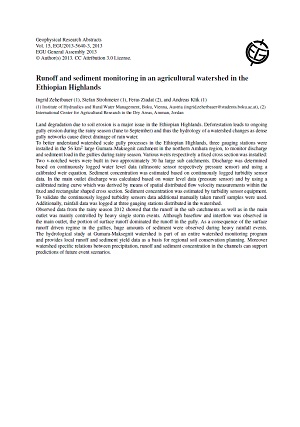Co-investments in land management: lessons from the Galessa watershed in Ethiopia
The use of co-investment activities to motivate farmers to carry out sustainable land management is increasingly recognized. Several co-investment efforts have been implemented to combat land degradation and increase agricultural production in the Ethiopian highlands. Nevertheless, these co-investment activities have not been documented. Moreover, the impacts of these activities have not been evaluated. This study presents a co-investment initiative for sustainable land management in the Galessa watershed in Ethiopia.



